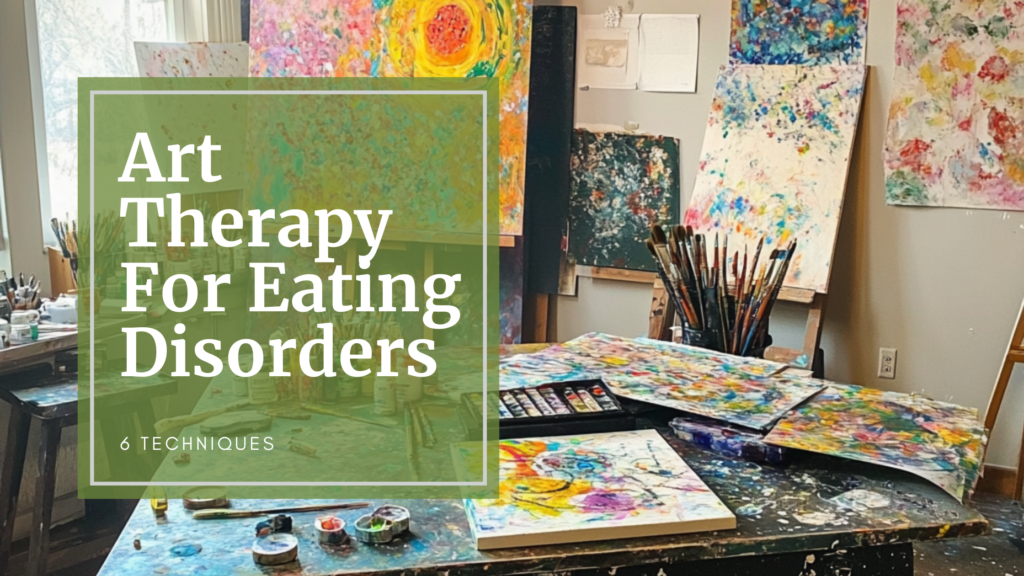8 Guided Meditation Practices for Beginners

Table of Contents
Introduction to Guided Meditation
Guided meditation is a powerful tool for beginners looking to start their journey towards inner peace and mindfulness. As we navigate the complexities of modern life, finding moments of calm and clarity becomes increasingly important. This practice offers a structured approach to meditation, making it accessible and effective for those new to the art of mindfulness.
In this comprehensive guide, we’ll explore eight guided meditation practices tailored for beginners. These techniques are designed to help you cultivate awareness, reduce stress, and foster a sense of well-being. As you embark on this journey, remember that meditation is a skill that develops over time, and consistency is key to reaping its full benefits.
For those interested in deepening their understanding of holistic health practices, including meditation, the Holistic Health Practitioner course offers a comprehensive curriculum that covers various aspects of mind-body wellness.
Before we dive into the specific practices, it’s important to note that guided meditation has been shown to have numerous benefits. According to the National Center for Complementary and Integrative Health, regular meditation can help reduce stress, anxiety, and symptoms of depression. It can also improve sleep quality and overall well-being.
1. Breath Awareness Meditation
Time Required: 5-10 minutes
Materials Needed: None

Breath awareness meditation is an excellent starting point for beginners. This practice involves focusing your attention on your breath, observing its natural rhythm without trying to control it. Here’s how to practice:
- Find a comfortable seated position, either on a chair or cushion.
- Close your eyes and take a few deep breaths to settle in.
- Begin to notice your natural breathing pattern.
- Focus on the sensation of air moving in and out of your nostrils or the rise and fall of your chest or abdomen.
- When your mind wanders (which is normal), gently bring your attention back to your breath.
- Continue this practice for 5-10 minutes.
Benefits: Research published in the Journal of Evidence-Based Complementary & Alternative Medicine suggests that breath awareness meditation can significantly reduce stress and anxiety levels. It also improves focus and concentration, making it an excellent practice for those looking to enhance their cognitive abilities.
For more information on the benefits of breath awareness and other meditation techniques, check out this comprehensive guide from the Mayo Clinic.
2. Body Scan Meditation
Time Required: 10-20 minutes
Materials Needed: A comfortable mat or bed

Body scan meditation involves systematically focusing your attention on different parts of your body, promoting relaxation and body awareness. This practice can be particularly helpful for those dealing with physical tension or stress-related discomfort.
- Lie down in a comfortable position, preferably on your back.
- Close your eyes and take a few deep breaths to center yourself.
- Begin by focusing on your toes, noticing any sensations present.
- Slowly move your attention up through your body, focusing on each part: feet, ankles, calves, knees, thighs, hips, abdomen, chest, hands, arms, shoulders, neck, and face.
- As you focus on each area, notice any sensations, tension, or discomfort without judgment.
- If you notice tension, imagine breathing into that area and allowing it to relax.
- Once you’ve scanned your entire body, take a moment to notice how your body feels as a whole.
Benefits: A study published in the Journal of Behavioral Medicine found that regular practice of body scan meditation can lead to improved sleep quality and reduced fatigue. It’s also an effective tool for managing chronic pain and enhancing overall body awareness.
To learn more about incorporating body scan meditation into your daily routine, visit our blog post on 5 tips for a healthy lifestyle, which includes practical advice on integrating mindfulness practices into your daily life.
3. Loving-Kindness Meditation
Time Required: 10-15 minutes
Materials Needed: None

Loving-kindness meditation, also known as Metta meditation, is a practice that cultivates feelings of goodwill, kindness, and compassion towards oneself and others. This practice can be particularly beneficial for those looking to improve their relationships and overall sense of well-being.
- Find a comfortable seated position and close your eyes.
- Take a few deep breaths to center yourself.
- Begin by directing loving-kindness towards yourself. Silently repeat phrases such as:
- “May I be happy”
- “May I be healthy”
- “May I be safe”
- “May I live with ease”
- After a few minutes, shift your focus to a loved one, repeating similar phrases for them.
- Next, direct loving-kindness towards a neutral person (someone you neither like nor dislike).
- If you feel ready, you can even direct loving-kindness towards someone you find difficult.
- Finally, extend loving-kindness to all beings everywhere.
Benefits: Research published in the Journal of Happiness Studies indicates that practicing loving-kindness meditation can increase positive emotions, decrease negative emotions, and improve interpersonal relationships. It’s also been shown to reduce symptoms of depression and anxiety.
For those interested in deepening their understanding of holistic health practices, including loving-kindness meditation, consider exploring our official certificate for holistic health practitioner training course.
4. Mindful Walking Meditation
Time Required: 10-20 minutes
Materials Needed: A quiet space to walk, indoors or outdoors

Mindful walking meditation is an excellent way to incorporate mindfulness into your daily life, especially for those who find sitting meditation challenging. This practice involves bringing your full attention to the experience of walking, focusing on each step and the sensations in your body.
- Find a quiet place where you can walk slowly without interruption.
- Stand still and take a few deep breaths to center yourself.
- Begin walking at a slow, natural pace.
- Focus your attention on the sensation of your feet touching the ground.
- Notice the movement of your legs, the swing of your arms, and the balance of your body.
- When your mind wanders, gently bring your attention back to the physical sensations of walking.
- Continue this practice for 10-20 minutes, or longer if you wish.
Benefits: A study published in the Journal of Alternative and Complementary Medicine found that mindful walking can reduce anxiety and improve mood. It’s also an effective way to incorporate physical activity into your meditation practice, promoting both mental and physical well-being.
To learn more about integrating mindful practices into your daily routine, check out our blog post on how to make the most of a holistic online course, which offers valuable tips for incorporating mindfulness into your learning journey.
5. Visualization Meditation
Time Required: 10-15 minutes
Materials Needed: None

Visualization meditation involves creating a mental image of a peaceful, calming scene or experience. This practice can be particularly helpful for reducing stress and anxiety, as well as fostering a sense of inner peace and tranquility.
- Find a comfortable seated position and close your eyes.
- Take a few deep breaths to relax your body and mind.
- Begin to visualize a peaceful scene, such as a beautiful beach, a serene forest, or a quiet mountain top.
- Engage all your senses in the visualization:
- What do you see? (e.g., the colors of the sky, the texture of the sand)
- What do you hear? (e.g., the sound of waves, rustling leaves)
- What do you smell? (e.g., salt air, pine needles)
- What do you feel? (e.g., warm sun on your skin, cool breeze)
- Immerse yourself in this peaceful scene, allowing any tension or stress to melt away.
- When your mind wanders, gently bring your attention back to the visualization.
- After 10-15 minutes, slowly bring your awareness back to your surroundings.
Benefits: Research published in the Journal of Clinical Psychology suggests that visualization meditation can significantly reduce stress and anxiety levels. It’s also been shown to improve mood, increase creativity, and enhance overall well-being.
For those interested in exploring the power of visualization and other natural approaches to health, our top 10 natural supplements for better health blog post offers complementary insights into holistic wellness practices.
6. Mantra Meditation
Time Required: 10-20 minutes
Materials Needed: None

Mantra meditation involves the repetition of a word, phrase, or sound to focus the mind and cultivate a particular state of consciousness. This practice can be particularly helpful for those who find it challenging to quiet their thoughts during meditation.
- Choose a mantra that resonates with you. It can be a traditional Sanskrit mantra like “Om” or a simple phrase like “Peace” or “Love”.
- Find a comfortable seated position and close your eyes.
- Take a few deep breaths to center yourself.
- Begin repeating your chosen mantra silently in your mind.
- Focus on the sound and vibration of the mantra as you repeat it.
- If your mind wanders, gently bring your attention back to the mantra.
- Continue this practice for 10-20 minutes.
Benefits: A study published in the Journal of Cognitive Enhancement found that mantra meditation can improve attention and cognitive performance. It’s also been shown to reduce anxiety and promote a sense of calm and inner peace.
7. Progressive Muscle Relaxation
Time Required: 15-20 minutes
Materials Needed: A comfortable mat or bed

Progressive Muscle Relaxation (PMR) is a technique that involves systematically tensing and then relaxing different muscle groups in the body. This practice can be particularly helpful for those dealing with physical tension, stress, or insomnia.
- Lie down in a comfortable position on a mat or bed.
- Take a few deep breaths to center yourself.
- Starting with your feet, tense the muscles as tightly as you can for 5 seconds.
- Release the tension and let the muscles relax completely for 10-15 seconds.
- Move up to your calves, then thighs, buttocks, abdomen, chest, arms, hands, neck, and face, repeating the process for each muscle group.
- Pay attention to the difference between the sensation of tension and relaxation in each area.
- After completing the full body sequence, take a few moments to enjoy the state of relaxation.
Benefits: Research published in the Journal of Behavioral Medicine has shown that Progressive Muscle Relaxation can significantly reduce anxiety and improve overall well-being. It’s also an effective technique for managing chronic pain and improving sleep quality.
8. Mindful Eating Meditation
Time Required: 10-15 minutes
Materials Needed: A small piece of food (e.g., a raisin, a slice of fruit, or a small piece of chocolate)

Mindful eating meditation is a practice that brings awareness to the act of eating, helping to foster a healthier relationship with food and improve digestion. This technique can be particularly beneficial for those looking to develop more mindful eating habits.
- Choose a small piece of food and sit comfortably at a table.
- Take a few deep breaths to center yourself.
- Observe the food with all your senses:
- Look at its color, shape, and texture.
- Smell the aroma.
- Feel the texture with your fingers.
- If it makes a sound, listen to it (e.g., the crunch of an apple).
- Slowly place the food in your mouth, but don’t chew yet. Notice the sensations on your tongue.
- Begin to chew slowly, paying attention to the taste and texture as they change.
- When you’re ready to swallow, notice the sensation of swallowing.
- Take a moment to notice how you feel after eating the food.
Benefits: A study published in the Journal of the Academy of Nutrition and Dietetics found that mindful eating practices can lead to improved weight management and a reduction in binge eating behaviors. It also promotes better digestion and a greater appreciation for food.
Conclusion
These eight guided meditation practices offer a diverse range of techniques to help beginners start their meditation journey. Remember, the key to reaping the benefits of meditation is consistency. Start with short sessions and gradually increase the duration as you become more comfortable with the practice.
As you explore these different meditation techniques, you may find that some resonate with you more than others. Feel free to experiment and find the practices that work best for you. The goal is to cultivate a regular meditation habit that enhances your overall well-being and brings more peace and clarity to your daily life.
For those interested in deepening their understanding of holistic health practices, including meditation, consider exploring our comprehensive Holistic Health Practitioner online training course. This course offers in-depth knowledge and practical skills to support your journey towards holistic wellness.
Explore More
- 5 Tips for a Healthy Lifestyle
- How to Make the Most of a Holistic Online Course
- Top 10 Natural Supplements for Better Health
References
- Corporate Wellness Magazine – Self-funded Employer Case Studies
- Anxious Minds – Mindfulness and Meditation for Anxiety
- VIURRSpace – A Case Study of Mindfulness Practices for Students in Elementary Schools in British Columbia
- Mayo Clinic – Meditation: A simple, fast way to reduce stress
- National Center for Complementary and Integrative Health – Meditation: What You Need To Know










Responses